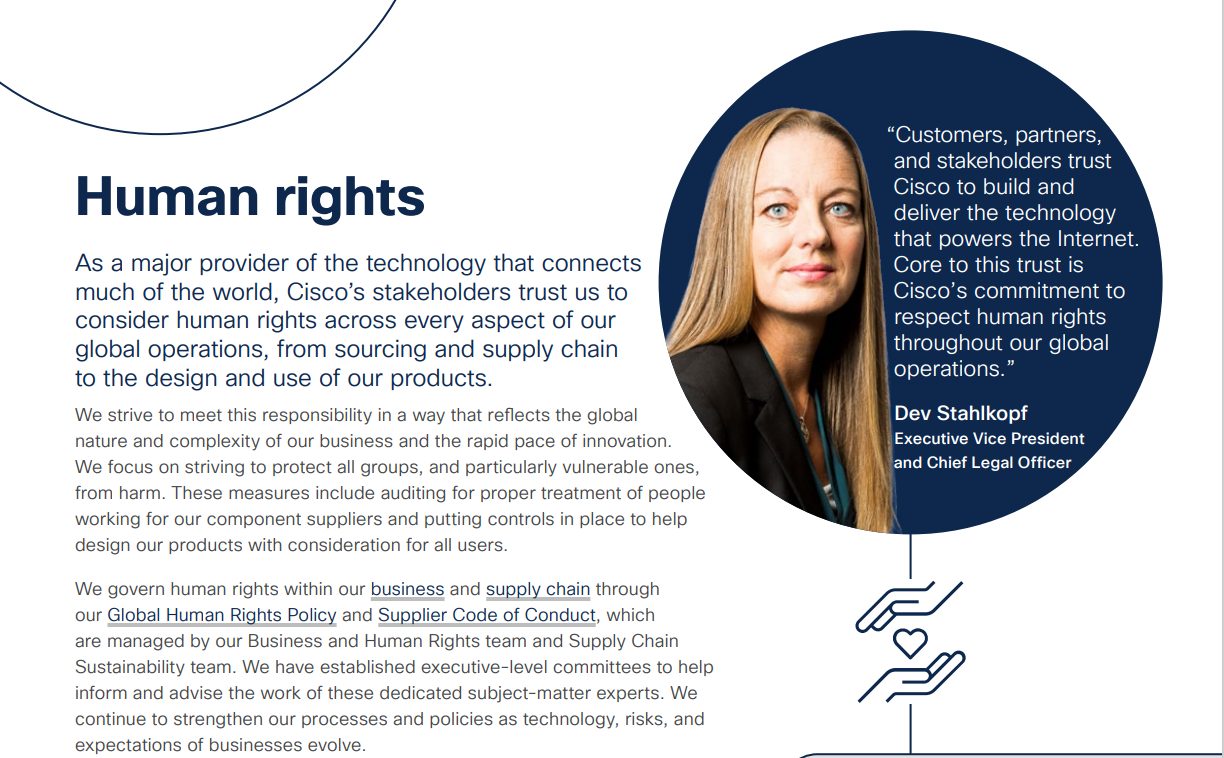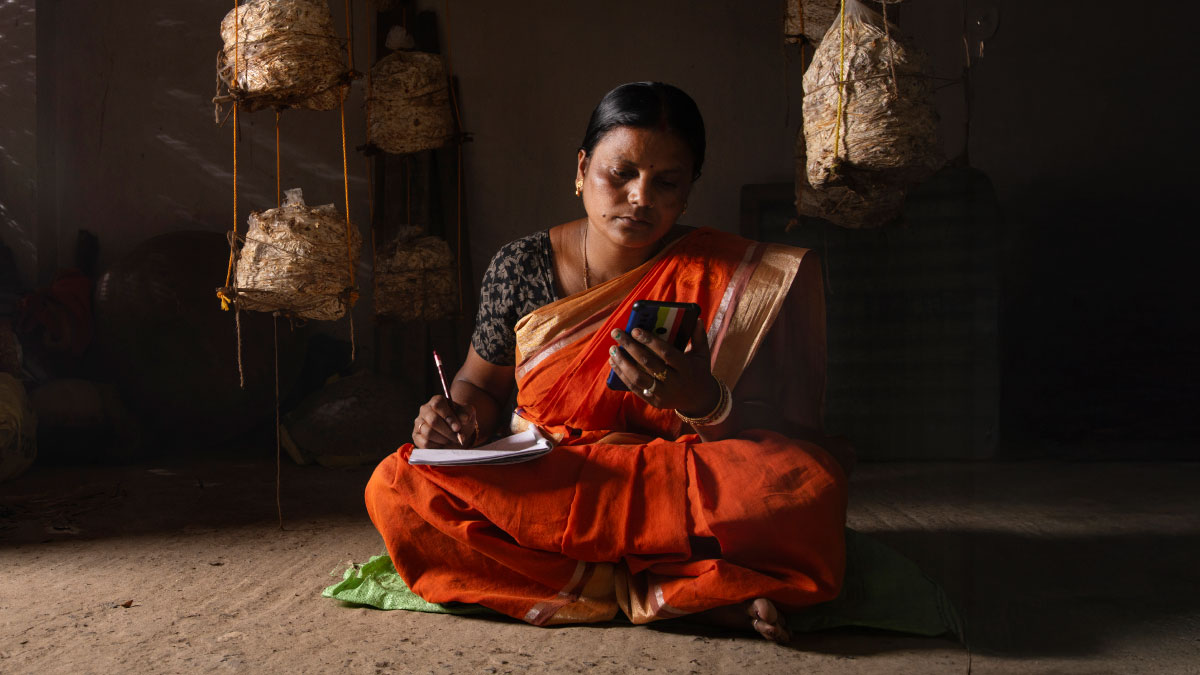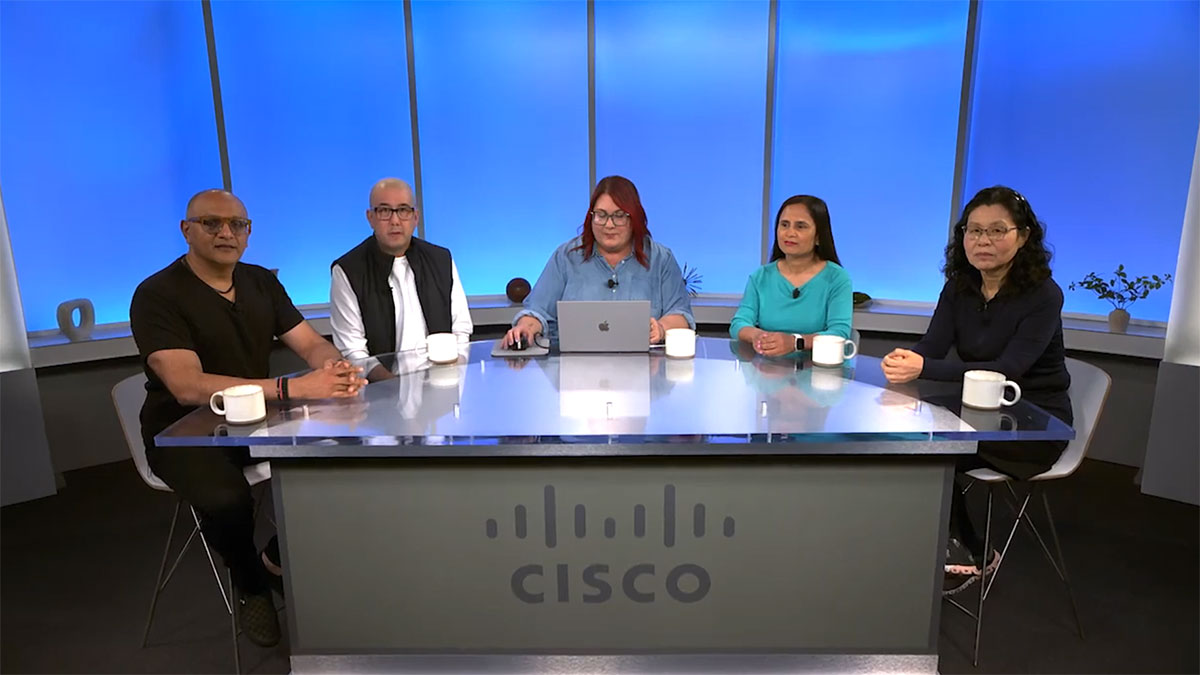At Cisco, respecting human rights is a key element of the company’s core purpose: powering an inclusive future.
In honor of Human Rights Day — and the release of Cisco’s annual Purpose Report — we spoke with Cisco’s Chief Legal Officer and Chair of Cisco’s Human Rights Advisory Committee, Dev Stahlkopf, about the work she and her team are doing to help Cisco create and deliver innovative technologies to build a better future.
Great to be speaking with you, Dev! Let’s start with a few quick thoughts on your role and that of your team.
Thanks, Kevin. Our mandate within Cisco Legal is to support the enterprise with the legal solutions and strategies to help Cisco create and deliver innovative technologies to our customers around the world. This takes shape in many forms – think protecting intellectual property, interpreting and advising on regulations around the world, contracting and sales support. Probably most relevant to this conversation, our Business Humans Rights team within Legal helps Cisco anticipate potential negative human rights impacts associated with our business operations and work to prevent, mitigate, and address them.
What are some areas in which they might show up?
One potential area is within our supply chain. At Cisco, we have a specialized team - the Supply Chain Sustainability (SCS) team - who are focused on upholding the human rights of the people who work in our supply chain. Our Business and Human Rights team supports them from a legal perspective. We’re also seeing more global government regulations regarding assessing human rights risks in supply chains. So, we’re making sure that Cisco’s not only living up to our own policies and high standards, but that we’re meeting new regulatory requirements.
What about our products? How do they align with our human rights standards?
We’re putting a lot of focus into the way that we design our products and to how they could be used — or misused — in ways that could impact human rights. For example, technology can be used appropriately in a physical security system, but it could also be misused in ways that impact privacy of vulnerable people, human rights defenders, or journalists in certain jurisdictions.
With their built-in emphasis on security and privacy, Cisco products must support human rights in many ways as well.
Yes, they certainly do. Look at Webex. Whereas the traditional user base for Webex is enterprise customers, it’s increasingly being used by more vulnerable people who benefit from its security advantages –children in schools, for example.
Another example is our focus on increasing access to justice. Cisco is sponsoring a hybrid courts pilot with the National Center for State Courts that will enable courts to provide their communities with flexibility in how they access the legal system. Litigants will be able to appear in person or virtually, depending on their needs. But hybrid courts can only increase access to justice if the experience is equitable to the in-person experience – meaning virtual participants shouldn’t be disadvantaged with lack of security, poor network connections, dropped audio, or poor-quality video. Cisco is uniquely positioned to support the hybrid court experience.
AI and machine learning are making important decisions throughout society and business. How is Cisco working to ensuring that they’re rights respecting?
AI has great potential for positive impact, but we have to design and use it responsibly. We developed a Responsible AI Framework and Principles for our engineers. Design controls for each of these principles are embedded in the product development lifecycle and trigger Responsible AI Impact Assessments. The goal of these assessments is to ensure that Cisco’s AI/ML solutions are designed transparently, fairly, and reliably.
At what stage in product development does the Business Human Rights team become involved?
Our Business Human Rights team is constantly looking at the ways that our products are being used or could be used around the world. The team conducts human rights assessments of products and works with development teams and engineering teams to design them for a wide range of potential use cases. This work is best done early in the development process, but we have learned that teams have found value from engaging the BHR team at other points too. For example, when entering a new market or serving a new group of end-users, we consider how these products could be misused, and we work with teams to add features or protections into the products that could prevent those types of misuse.
It can’t be easy to anticipate potential issues.
Well, it’s our overarching goal. We don’t know what we don’t know, and we’re constantly having to look ahead and try to see around corners. Our team maintains relationships with civil society organizations and other human rights experts around the world. Engaging with these groups is helpful both in understanding the impacts of our technology on people and in anticipating potential challenges.
Of course, Cisco’s core purpose is powering an inclusive future for all. Any closing thoughts on how your team’s work on human rights work aligns with that purpose?
I think that they’re inextricably intertwined. Our purpose is to power an inclusive future for all. And bringing in a human rights perspective really hits on all three of those components. On the powering side, we’re looking at our products and how they’re designed, developed, and used around the world. From an inclusive standpoint, we think about a variety of potential users — ensuring that our products work for and respect human rights, which are universal. As for the future, we’re helping to inform and educate the business to be making products that contribute to society, and at the earliest stages of the value chain to begin thinking about making positive impacts for the long term. In the end, it’s about laying the foundation for future generations.





